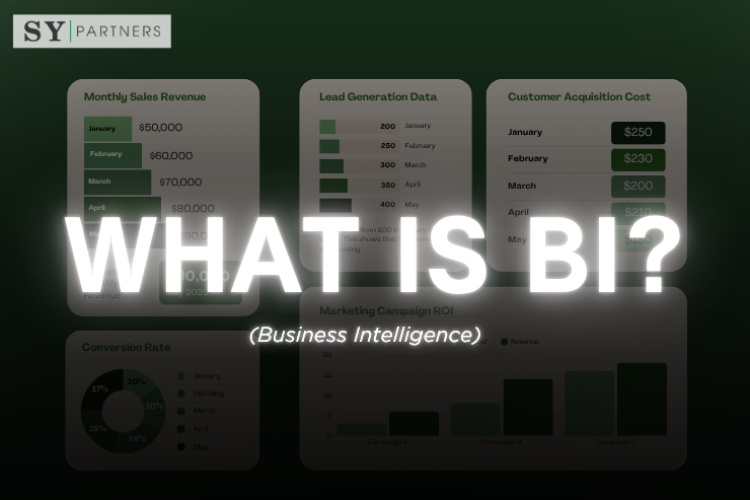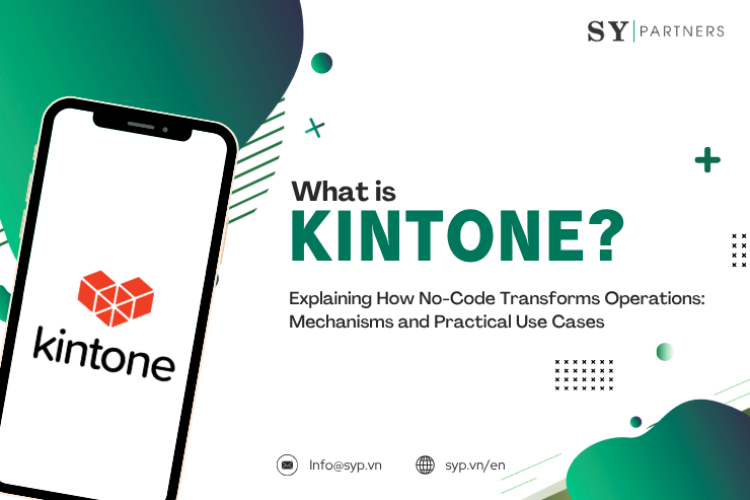What is CRM? A Complete Guide to Customer Relationship Management: Basics, Features, Use Cases, and Implementation Tips
In today’s business environment, putting the customer at the center is no longer just a slogan—it’s a survival strategy. Traditional business growth relied heavily on acquiring new customers, but as markets mature and competition intensifies, the cost of acquiring new customers (CAC: Customer Acquisition Cost) continues to rise. In contrast, retaining existing customers is more cost-effective and creates opportunities to increase LTV (Customer Lifetime Value) through repeat purchases and upselling. How companies incorporate this difference into their management strategy has become a key driver of sustainable growth.
Against this backdrop, CRM (Customer Relationship Management) has gained importance. CRM is not simply an IT system; it’s a management philosophy and mechanism designed to treat customers as valuable assets, strengthen long-term relationships, and maximize both revenue and profit.
This article provides a comprehensive overview of CRM: what it is, its features, core functions, advantages and disadvantages, real-world applications, implementation challenges, and frequently asked questions—helping both executives and practitioners develop a shared understanding.
1. What is CRM?
CRM refers to the practice of collecting and centralizing all customer-related information and leveraging it across departments such as sales, marketing, and customer support to strengthen long-term customer relationships.
The critical point here is that CRM is not just a customer list or database.
Traditionally, customer data was often managed separately by individual sales reps, with information stored in personal files or even just in their memory. This led to issues such as:
- Dependence on individuals: If a rep left or changed roles, the customer relationship could be lost.
- Lack of information sharing: Marketing or support teams often had no access to sales data, resulting in inconsistent customer experiences.
CRM eliminates these problems. By recording and consolidating all touchpoints (e.g., meetings, purchases, inquiries, website visits, social media interactions), CRM makes information accessible across the organization. This allows companies to treat customers not as one-time transactions, but as long-term assets.
In other words, CRM helps shift corporate culture from salesperson-centered to customer-centered.
2. Key Features of CRM
Unlike traditional sales management or simple marketing tools, CRM provides visibility across the entire customer lifecycle.
| Feature | Description |
|---|---|
| Integrated customer data management | Consolidates data from sales, marketing, and support, allowing company-wide access and consistent customer insights. |
| Deeper customer understanding | Analyzes purchase history, inquiries, and online behavior to uncover not just who the customer is, but why they act as they do. |
| Optimized communication | Engages customers through the right channels (email, phone, social media) at the right timing, preventing mismatched or excessive outreach. |
| Marketing automation | Automates emails and campaigns, delivers personalized content, and makes performance tracking easy. |
| Customer success support | Stores and shares support history to provide fast, consistent responses, reducing churn and strengthening loyalty. |
Through these capabilities, CRM goes beyond being a customer management tool—it becomes the foundation for executing a company-wide customer strategy.
3. Core Functions of CRM
CRM solutions cover a broad range of functionalities, but they can be grouped into five main areas:
| Category | Key Functions | Expected Benefits |
|---|---|---|
| Customer Data Management | Centralized storage of contact info, purchase history, web activity, and contracts | Provides a unified customer view across all departments |
| Sales Support (SFA) | Deal tracking, pipeline management, sales forecasting, activity logs | Standardizes sales processes, improves efficiency and win rates |
| Marketing Support | Segmentation, email campaigns, campaign tracking | Enables targeted campaigns and accurate performance measurement |
| Customer Support | Inquiry tracking, knowledge sharing, integrated chat | Improves response speed and quality, enhances customer satisfaction |
| Analytics & Reporting | Revenue tracking, LTV analysis, churn prediction, customer scoring | Supplies management with actionable insights for strategy |
| Automation & Workflow | Task assignment, reminders, alerts | Boosts operational efficiency and reduces human error |
The true value of CRM lies in integration—when sales data informs marketing efforts, and customer support insights feed back into sales strategies. This cycle creates a seamless, consistent customer experience.
4. Advantages and Disadvantages of CRM
While CRM adoption delivers significant benefits, it also presents challenges. To correctly evaluate its impact, companies must understand both sides.
| Category | Advantages | Disadvantages |
|---|---|---|
| Customer Insight | Enables deep, data-driven customer understanding | Accuracy declines if data input and updates are not maintained |
| Sales Efficiency | Visualizes sales activities and improves efficiency | Risk of becoming a “unused system” if adoption fails across the organization |
| Marketing Effectiveness | Allows precise, segmented campaigns | Implementation and operational costs can be high |
| Customer Satisfaction | Facilitates faster, consistent support through shared history | Data overload may increase analytical complexity |
| Revenue Growth | Boosts repeat purchases and maximizes LTV | ROI often takes time to materialize |
5. Differences Between CRM, MA, SFA, and ERP
CRM is not a “magic tool” that instantly produces results. Its effectiveness depends on three key conditions: high-quality data, organizational adoption, and executive involvement.
In the landscape of enterprise IT systems, CRM is often confused with MA (Marketing Automation), SFA (Sales Force Automation), and ERP (Enterprise Resource Planning). While they are related, their objectives and scopes differ significantly. Understanding these differences is essential for making informed decisions on implementation and system integration.
| Comparison Point | CRM (Customer Relationship Management) | MA (Marketing Automation) | SFA (Sales Force Automation) | ERP (Enterprise Resource Planning) |
|---|---|---|---|---|
| Target | Existing customers | Leads/prospects | Customers in negotiation | Internal business processes |
| Primary Role | Integrates customer data and strengthens relationships | Nurtures leads and passes them to sales | Visualizes and streamlines sales activities | Integrates core operations: accounting, HR, production |
| Purpose | Increase LTV, build loyalty | Improve lead acquisition and nurturing efficiency | Improve sales forecasting and win rates | Company-wide efficiency and cost reduction |
| Departments | Sales, Marketing, Support | Marketing | Sales | Finance, HR, Production |
| Data Types | Customer attributes, purchase history, inquiry history | Web behavior, email opens, campaign responses | Deal details, pipeline progress, activity logs | Financial data, HR data, inventory, production |
| Time Horizon | Medium to long term (customer lifecycle) | Short to mid term (lead nurturing) | Short to mid term (deal cycle) | Long term (enterprise-wide operations) |
| Key Metrics | LTV, churn rate, customer satisfaction | Number of leads, scoring accuracy | Win rate, sales forecast accuracy | Cost reduction, efficiency, inventory turnover |
| System Integration | Works best when integrated with MA, SFA, ERP | Passes leads into CRM/SFA | Connects with CRM for full customer view | Connects with CRM for “customer + operational” insight |
| Cost & Timeline | Medium-to-large investment, 6 months–several years | Relatively low-cost, quick setup | Medium investment, months to 1 year | Large-scale investment, long-term project |
| Impact on Management | Enables customer-centric management | Improves marketing ROI | Boosts sales productivity | Optimizes enterprise operations, accelerates decision-making |
In summary, CRM serves as the backbone of customer relationship strategy, while MA and SFA complement it by covering the processes before and after, and ERP consolidates back-office operations. True digital transformation and competitiveness emerge when these systems are integrated, enabling company-wide optimization rather than siloed improvements.
6. Use Cases of CRM
CRM is particularly effective in the following scenarios:
- Enhancing sales activities: By tracking customer-specific deal histories, sales teams can make the right proposals at the right time. Information sharing across the team eliminates reliance on individual knowledge.
- Improving marketing precision: Based on customer attributes and behavioral data, personalized campaigns and retargeting can be executed. Effectiveness can be measured for each initiative, contributing to improved ROI.
- Streamlining customer support: Utilizing inquiry history enables fast and consistent support. This reduces dissatisfaction and churn while increasing customer satisfaction.
- Supporting strategic decision-making: Accumulated data enables sales forecasting and churn risk analysis, helping executives make informed strategic decisions. CRM provides not only short-term insights but also a foundation for medium- to long-term strategies.
7. Key Considerations When Implementing CRM
When introducing a CRM system, companies should pay attention to the following five points:
- Clarify objectives: Define whether the goal is revenue growth or customer retention. Without clear objectives, CRM risks becoming an empty system.
- Ensure data quality: Establish input rules and an operational structure; otherwise, analysis and initiatives will not function accurately.
- Secure adoption at the field level: Provide training for sales, marketing, and support teams to ensure CRM becomes part of their daily workflow.
- Choose the right tool: Select a solution that matches your company’s size and strategy, such as Salesforce, HubSpot, or Zoho CRM.
- Take a long-term perspective: CRM is not a system that delivers results overnight. It should be understood as a tool that gradually demonstrates value over two to three years.
Conclusion
CRM is not just about managing customer data—it is a management foundation that enables organizations to deeply understand customers, optimize their experiences, and maximize long-term revenue. Instead of expecting short-term results, companies should focus on strategic, long-term adoption and embed CRM into their organizational culture.
Ultimately, CRM embodies the principle of “treating customers as assets”, making it an indispensable system for sustainable business growth.


 EN
EN JP
JP KR
KR




